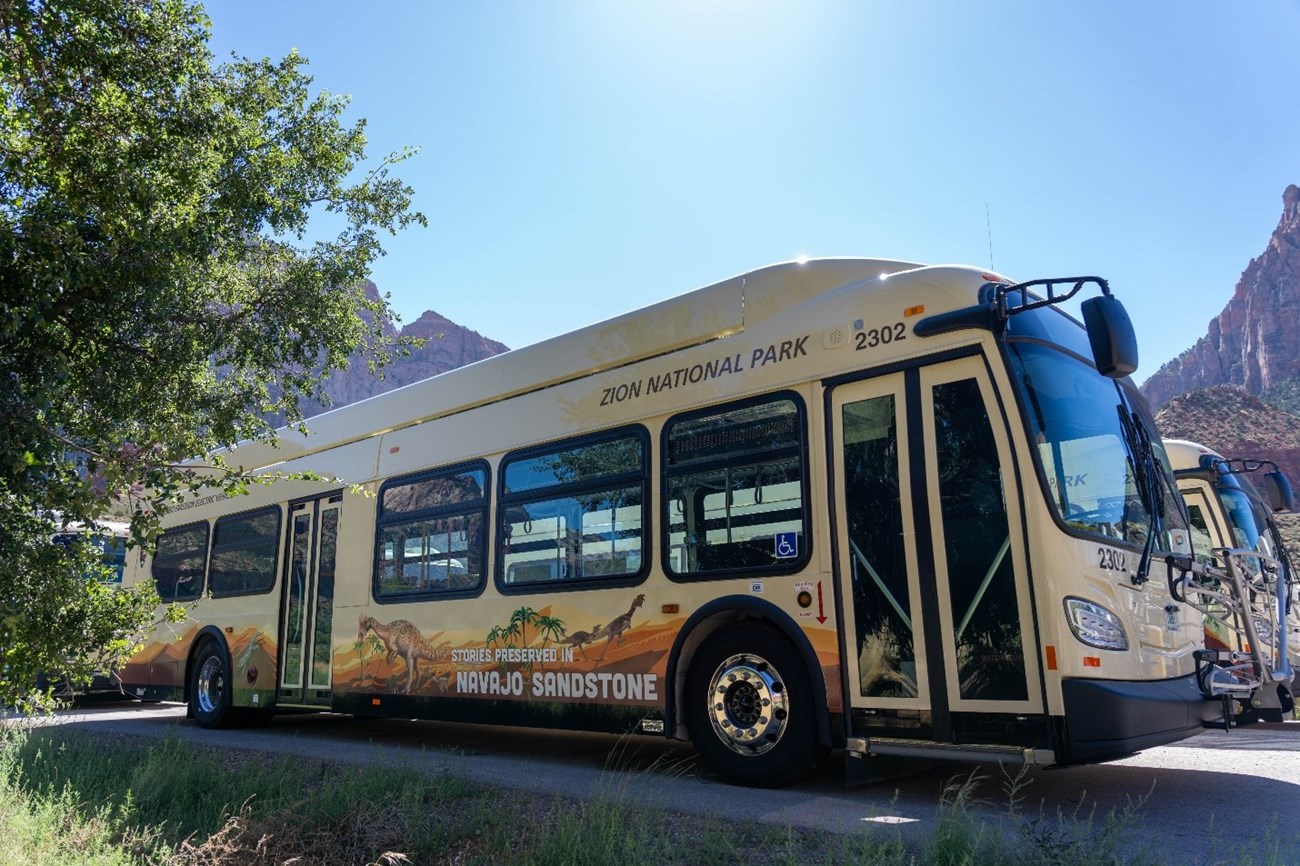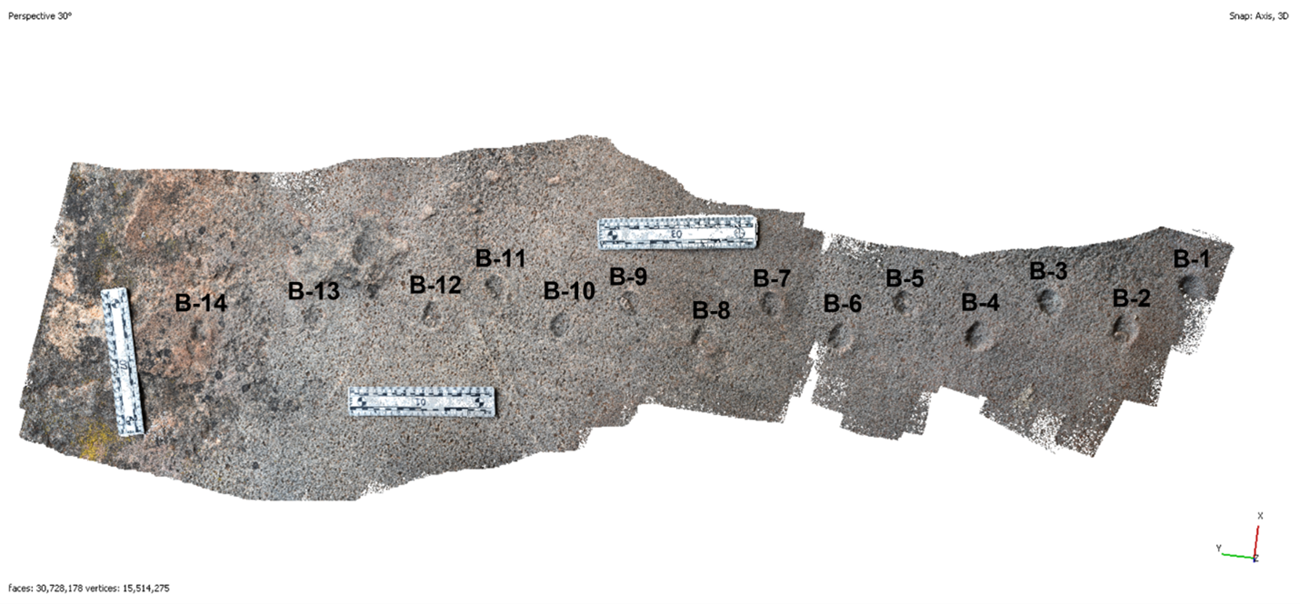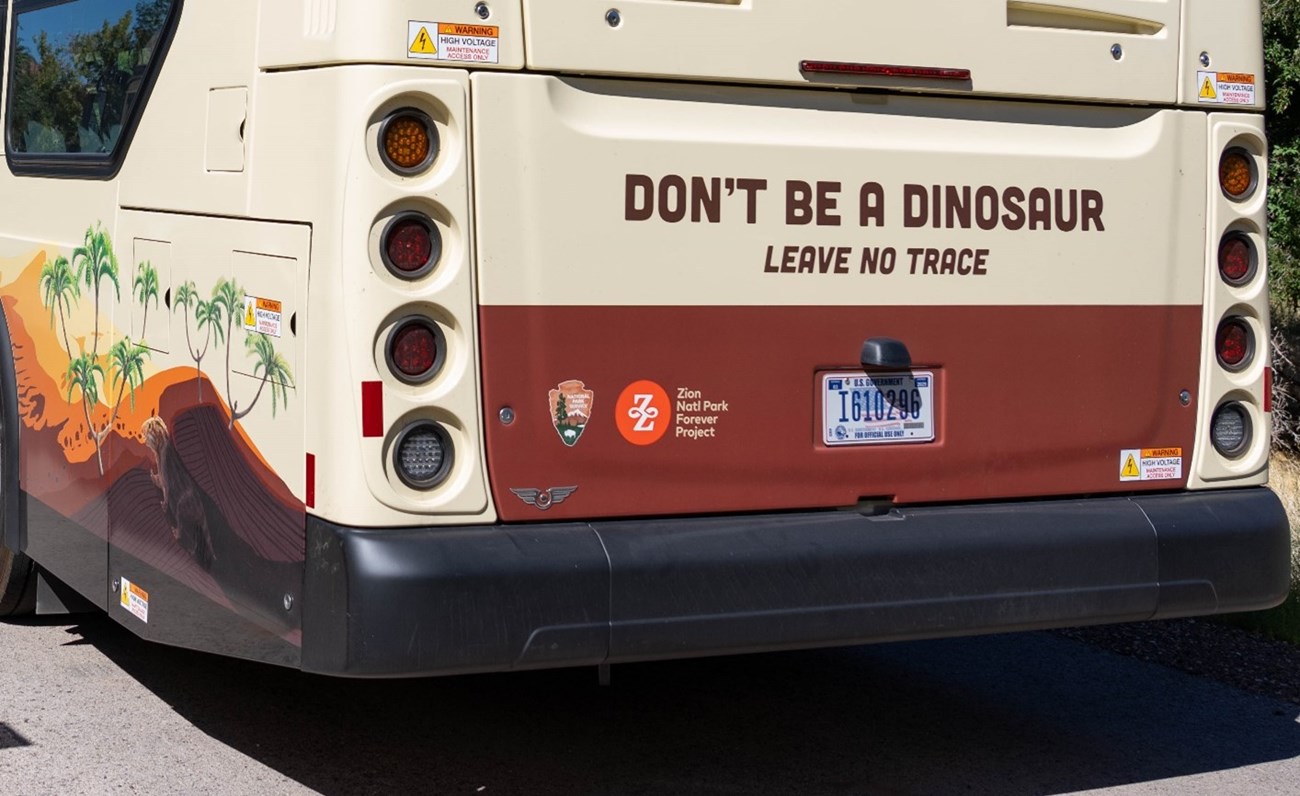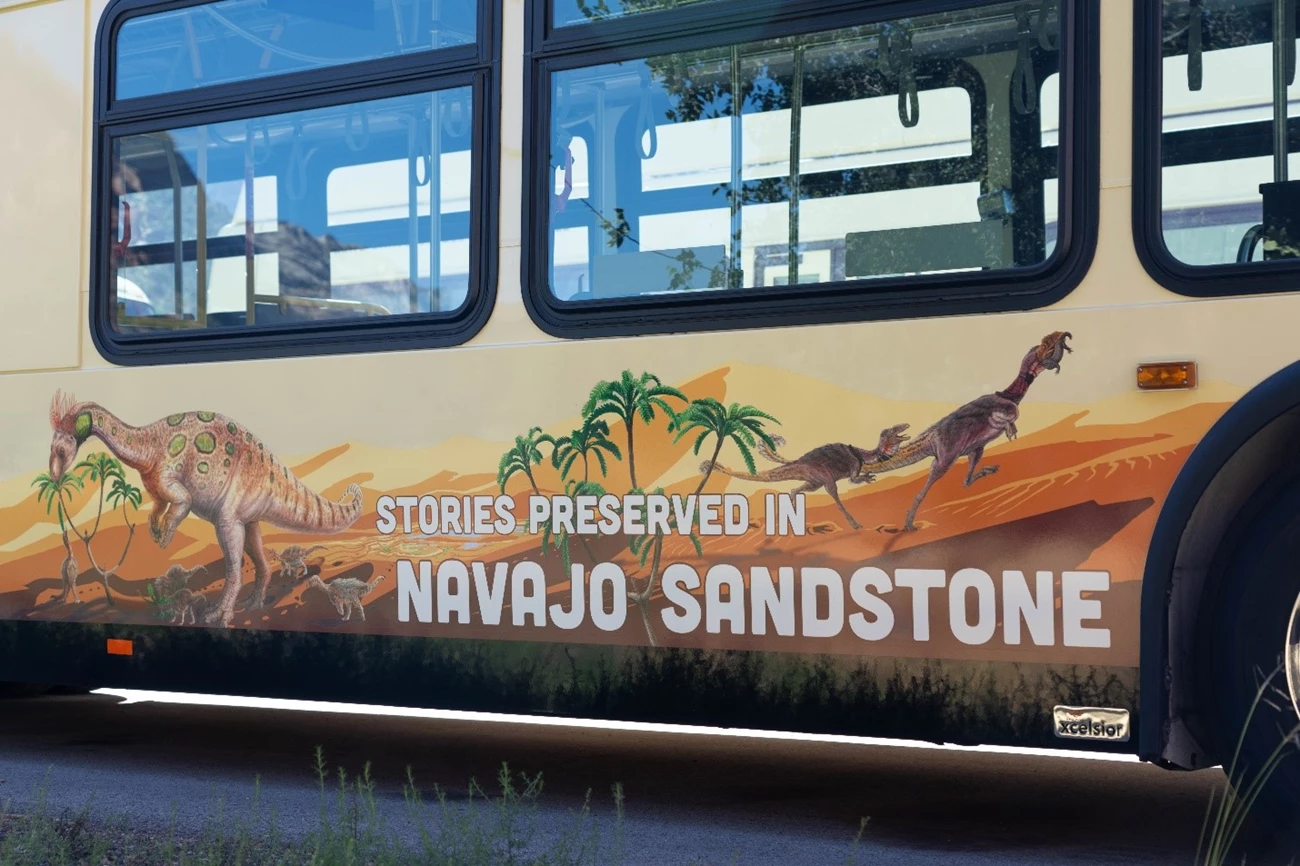Part of a series of articles titled Park Paleontology News - Vol. 15, No. 2, Fall 2023.
Article
New Navajo Sandstone-Themed Electric Shuttle Bus Transports Visitors Back in Time at Zion National Park

Robyn Henderek, Physical Scientist
Zion National Park, Utah
Thanks to a 33-million-dollar grant from the U.S. Department of Transportation and support from park partners such as the Zion Forever Project, National Park Foundation, Utah Department of Transportation, Utah Clean Cities, Iron and Washington Counties, and the town of Springdale, Zion National Park has begun upgrading its decades-old propane-powered shuttles to an all-electric bus fleet! These new electric buses will cut greenhouse gas emissions, significantly reduce levels of artificial noise, add to rider capacity, serve visitors more efficiently, and increase accessibility of all ability levels to Zion Canyon.
With this new electric shuttle fleet came the opportunity to reenergize the park’s shuttle bus look. Park managers wanted to choose distinct themes for each bus so that shuttles could easily be told apart from one another on the road and, at the same time, help tell Zion National Park’s story. Given the prominence of Zion Canyon’s iconic geologic formation, the Navajo Sandstone was chosen as one of the first themes for the new fleet of buses. Geologic evidence suggests that within the dunes of the Navajo Sandstone were desert oases that sustained a thriving paleoecosystem. Designing a Navajo Sandstone shuttle bus was a unique opportunity for the park to tell the stories of past life preserved in the often-imagined barren desert environment.

NPS photo.
With the assistance from Zion National Park’s official non-profit partner, Zion Forever Project, paleoartist Brian Engh was commissioned to design the new Navajo Sandstone shuttle bus. Brian is well-known throughout the paleontological community for his scientific renditions of ancient creatures and environments. An important step in his process involves considering dimensions and form from actual paleontological material. For example, when drawing the curves of Otozamites leaves, Brian built a frond mock-up to use as a reference to understand how the leaves curved downward to then translate to his art. Park staff and Brian collaborated on the framework for the design, a wrap that would cover the full length of the bus, which would highlight the plants and animals that called the sand dunes home 190 million years ago.

NPS model by Scientists-in-Parks intern Conner Bennett.
Preservation within the Navajo Sandstone is often limited to trace fossils, but these tracks tell an important story of the trackmakers place in the environment. In 2018, a visitor discovered a Brasilichnium trackway while exiting a canyoneering route in the park. These tracks were found on a block of Navajo Sandstone that had fallen from hundreds of feet above and fractured on a depositional plane. Tritylodonts, mammal-like reptiles, are considered to be one of the potential Brasilichnium track-makers, so Brian included in his design Brasilichnium tracks leading to a burrow of a tritylodont peeking its head out to survey the desert landscape. In this burrow, Brian had the opportunity to showcase a cross-section of the Navajo Sandstone’s iconic cross-stratification associated with sand dune deposition to help visitors link forms they see in the rocks to this ancient environment.

NPS photo.
Brian thoughtfully included a scene of meal gathering with a pair of carnivorous coelophysoid theropods, likely makers of Grallator tracks, one clutching a lizard-like sphenodontian in its jaws, as well a nearby herbivorous Seitaad family munching on Otozamites leaves. These two scenes of life are proximal to a desert oasis Brian depicted in the background. As the lifeblood for the ecosystem, water would have been a site of convergence of these organisms fighting to survive in the arid landscape.
Brian also found inspiration from the rare occurrence of crouching Jurassic Eubrontes tracks found at the nearby Johnson Farm Tracksite in St. George, Utah. Brian depicted a large, colorful Dilophosaurus, a likely Eubrontes track-maker, resting its forearms in the sand.

NPS photo.

NPS Photo
While Brian has worked with a variety of other media, this was his first experience working within the dimension limitations of a vehicle. Brian creatively designed around features such as the wheel wells, windows, and the front doors of the shuttle to put together the cohesive scene. The Navajo Sandstone bus is expected to be in service for decades as it transports millions of visitors to and through the park. As this bus provide a glimpse into the ancient life preserved in the canyon walls, the park ultimately hopes the artwork will strike wonder in the eyes of the next generation of paleontologists and park rangers who may step onboard.
Related Links
-
Zion National Park (ZION), Utah—[ZION Geodiversity Atlas] [ZION Park Home] [ZION npshistory.com]
Last updated: September 28, 2023
